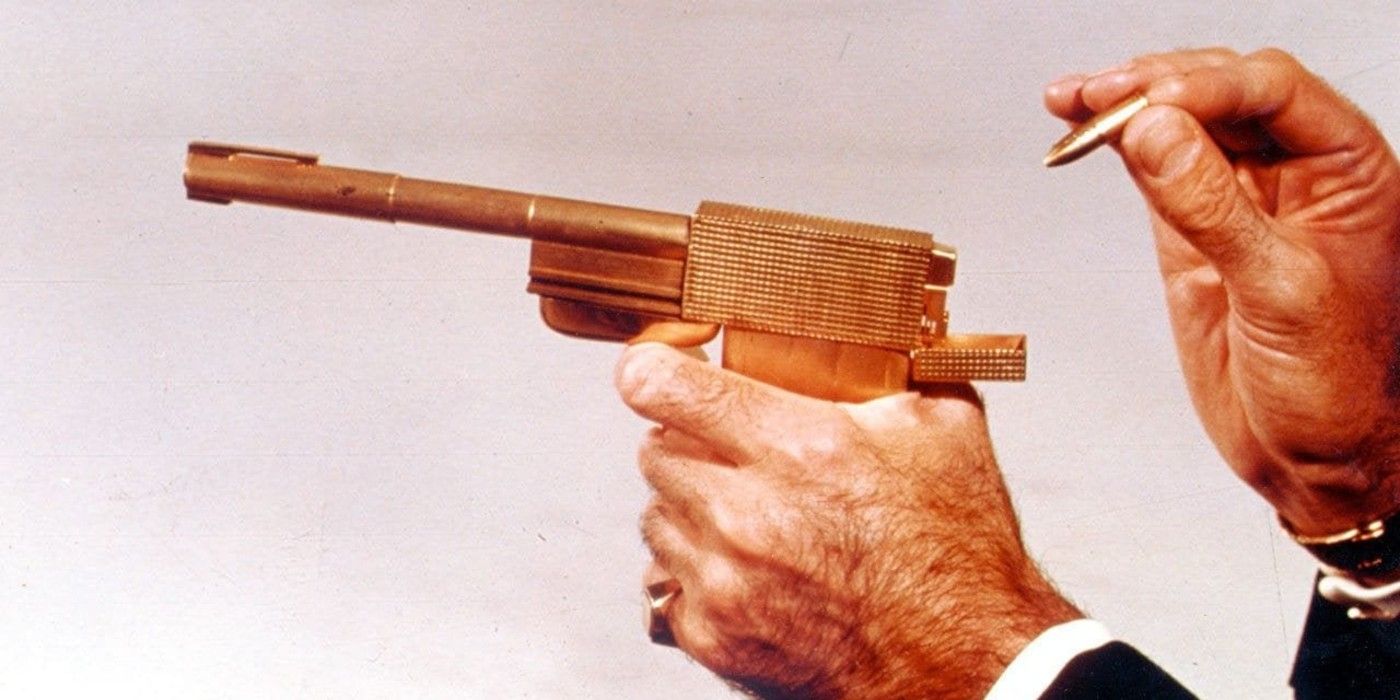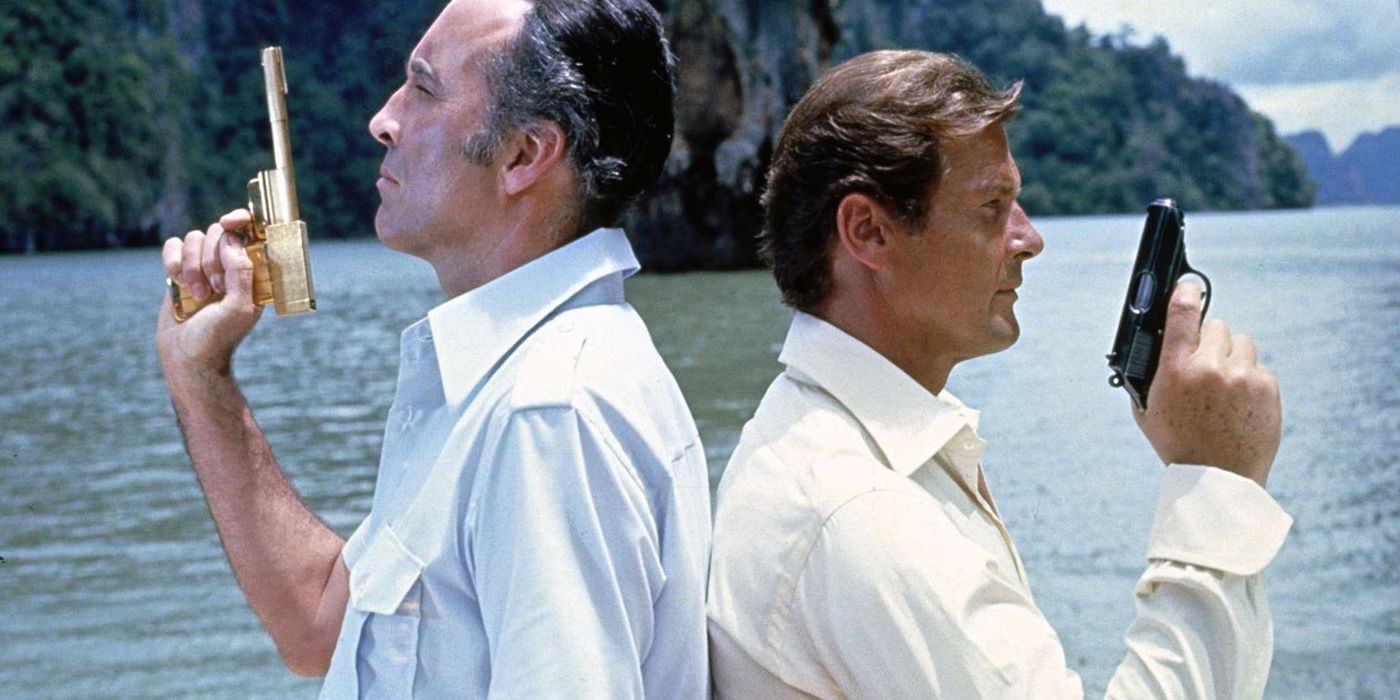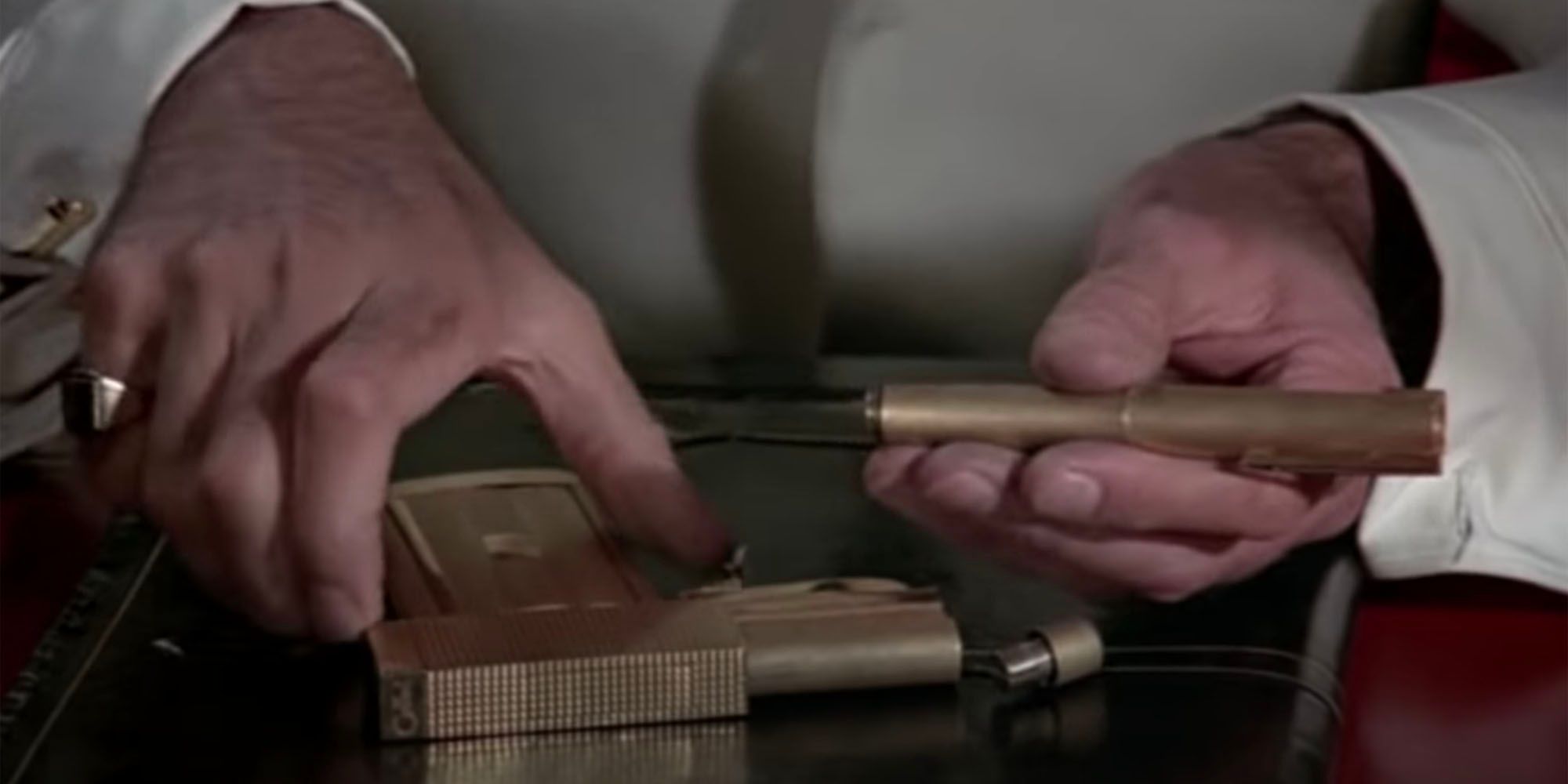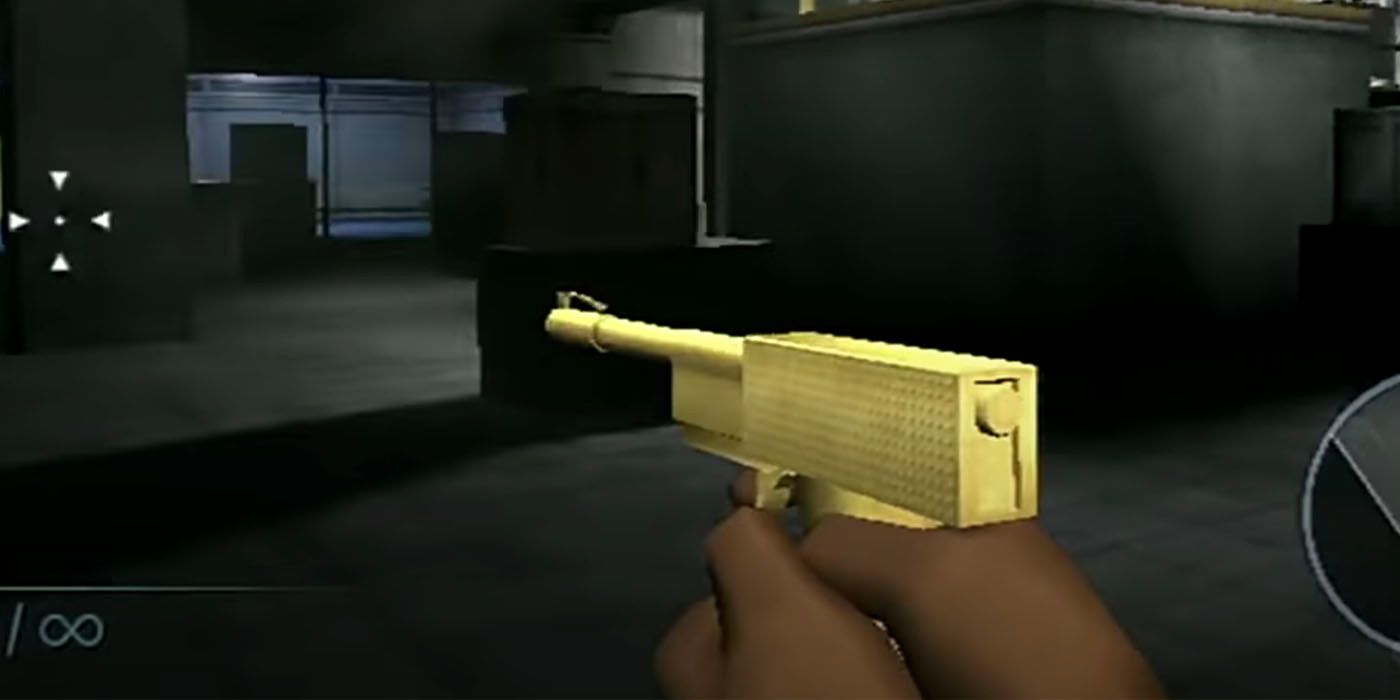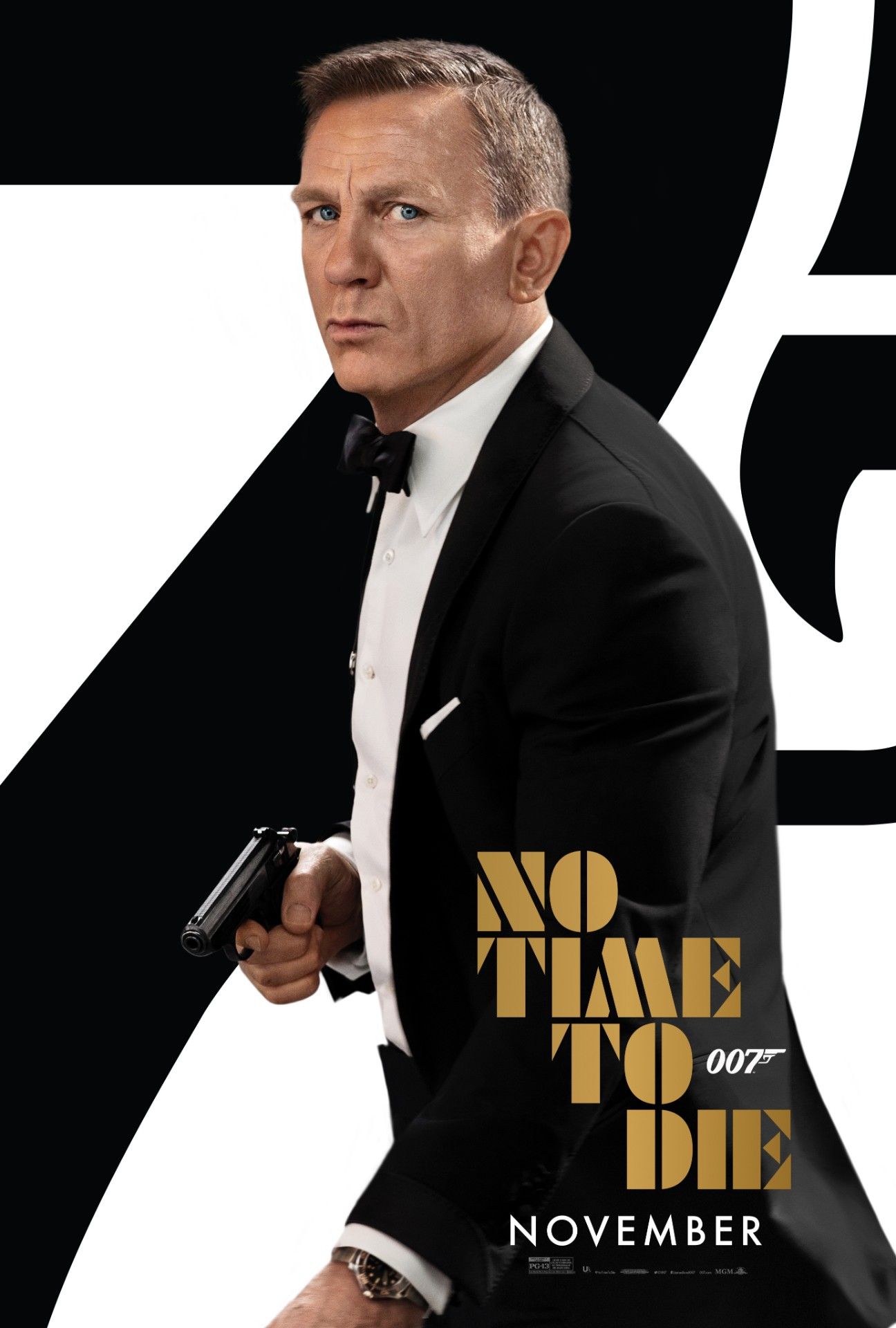The Man with the Golden Gun introduced one of the most memorable weapons in James Bond history. In 1973, Bond was riding a renewed wave of success after Live And Let Die had brought in an unprecedented $161 million at the box office, making it the most successful film of the franchise. However, things would take a disappointing turn the following year when The Man with the Golden Gun hit theaters. Despite the involvement of a veteran Bond creative team including director Guy Hamilton, screenwriter Richard Maibaum, and composer John Barry, The Man With The Golden Gun was met with a lukewarm response from critics and a comparatively low $97.6 million box office take.
But amid The Man with the Golden Gun’s various missteps, Christopher Lee’s portrayal of villain Francisco Scaramanga remains a highlight of the Bond canon to this day. Thanks to Lee’s performance, Scaramanga became one of 007's most memorable antagonists, transcending the uneven film in which he appears. Equally memorable was his weapon of choice - a golden pistol made of various everyday objects. The pistol itself has since inspired fan-made and official replicas and has appeared in various other 007-related media - most notably as a ludicrously overpowered weapon in the legendary video game GoldenEye 007.
Aside from Bond’s signature Walther PPK, the Golden Gun might just be the most recognizable firearm in the franchise’s almost 60-year history. With the 25th film in the series, No Time To Die, set to arrive in November of this year, here's a look back at the Golden Gun and its prolific record as a staple of the Bond franchise.
The Man With The Golden Gun Explained
In 1965, Ian Fleming’s final Bond novel The Man With The Golden Gun introduced readers to Francisco “Pistols” Scaramanga, a Cuban assassin who had an unlikely background in a travelling circus. Throughout the novel, he's known for dispatching his marks with a gold plated .45 Revolver. In the book's final duel, Scaramanga manages to clip Bond with a bullet from another of his go-to weapons, a “tiny golden Derringer,” before Bond returns a fatal shot.
While Scaramanga wouldn’t survive his first literary outing, the character and his gaudy pistol would. Almost a decade later, the film version of The Man With The Golden Gun arrived, complete with third nipples and a diminutive villain named Nick Nack. Though the film struggled to match the sales and critical reception of its predecessor, thanks to Christopher Lee's portrayal of Scaramanga, The Man With The Golden Gun’s legacy hasn’t been entirely defined by underwhelming critical and commercial response.
Of course, the filmmakers also had a hand in establishing Scaramanga as such a memorable character. Director Guy Hamliton and screenwriters Richard Maibaum and Tom Mankiewicz took some liberties with Fleming’s original vision for the character that paid off in the long run. In the film, he was a world-renowned assassin whose services could be procured for a cool million-dollars-per-kill, and those kills would be delivered not via a “tiny golden Derringer” but by a modular golden pistol made up of seemingly harmless parts. A cigarette case formed the handle, a lighter became the body of the gun, a gold cufflink was used for the trigger, and a fountain pen screwed into place to form the barrel. Scaramanga also kept his signature golden bullet hidden in his belt buckle. It’s this inventive take on the golden gun that has since acquired legendary status among Bond fans.
The Golden Gun Prop
Taking some creative license with Scaramanga and his weapon, the film version of The Man With The Golden Gun took Fleming’s original idea and turned it into a renowned piece of Bond iconography - up there with the gadgets and Bond cars. But the story of how the prop was actually made remains hazy at best. The film’s closing title sequence credits Colibri Lighters as the sole manufacturer of the golden gun, but other stories have since made the rounds. Some credit art director Peter Lamont with its original creation. Lamont was said to have created a prototype before taking it to Colibri to produce the on-screen version. However, the Colibri guns were reportedly held together by magnets and therefore rejected due to their instability. Lamont was then said to have used a London-based company named Rose to create the final guns used in the film.
Other accounts claim special effects wizard John Stears was behind the creation of the weapons, using Colibri parts and an actual pen from Waterman. Elsewhere there are reports that Pinewood Studios’ own engineer, and Bond movie SFX veteran, Bert Luxford, who had worked on the series since Goldfinger, designed the gun. The actual golden gun's origin may remain unclear, but what seems consistent between stories is that there were three versions of the weapon made for the film. One was a fully modular version that could actually be assembled and disassembled, the next was a straightforward, single-piece gun, and the last was a cap gun that could actually be fired.
Whatever the truth may be, the actual design of a gun that disassembles into inconspicuous parts was undoubtedly ingenious and gave the film itself a real marketing boost. So confident in the popularity of such an original design were the filmmakers, that the gun itself would become the focus of many of the movie posters that accompanied the launch of The Man With The Golden Gun. Usurping Bond as the main focus of his own movie poster isn’t an easy feat to accomplish and speaks to the ingenuity that made the golden gun such a memorable piece of not just Bond, but action film history.
Of course, since the film’s release there have been numerous replicas of the weapon produced, with two official versions by SD Studios and Factory Entertainment. The latter is perhaps the most impressive, with its 1:1 scale 18 carat gold-plated parts that can be fully disassembled. The parts match the movie as closely as possible, too, with a fountain pen for the barrel, a lighter with a “hidden ‘slide out’ section,” a cigarette case for the handle and trigger housing, and of course the trigger cufflink. There’s even a replica, 007-inscribed bullet included.
Elsewhere, Bond superfans have taken on the task of recreating Scaramanga’s famous sidearm. YouTuber and engineer TheQUARTERMASTEROO7 might just have the best of these fan-made replicas with his one-of-a-kind fully functioning prop. With the fully modular gun made from brass and coated in 24 carat gold, The Quarter Master’s version is more of a spin on the original prop rather than a faithful reproduction. Nevertheless, the fact that fans are creating their own visions of the original golden gun once again speaks to its standing as one of cinema's most renowned weapons.
The Golden Gun in GoldenEye
Some 23 years after The Man With The Golden Gun’s release, the on-screen version of the golden gun would still be influencing popular culture, this time in video game form with the release of 1997’s GoldenEye 007. Arguably the Nintendo 64’s best game, Rare’s certified classic introduced an entire generation of kids to the first-person-shooter and single-handedly dispatched with the "Doom-clone" label given to any game trying to emulate the mechanics of Bethesda’s beloved shooter. GoldenEye 007’s innovative level design and faithful adherence to Bond history made it a huge hit with gamers of the mid-90s, but it was the multiplayer mode that kept kids playing for years after its release. And among the weapons available in multiplayer was, of course, the famous golden gun.
Many fans of the Bond series delighted in seeing such an iconic weapon show up in-game. But many gamers immediately found themselves getting frustrated with its overpowered stats - despite the game's overall standing as the best Bond game ever made. The golden gun in GoldenEye 007 was naturally a one-shot-kill weapon, staying true to Scaramanga’s famed sharp-shooting ability from the original novel and film. It could also only hold and fire one bullet at a time, and if players' aim was as good as Scaramanga himself, one bullet was all it took.
Such a deadly firearm was always going to be controversial in a game where players stood a much bigger chance of being stuck with the miserable Klobb submachine gun. Alongside the frustratingly small playable character Odd Job - whom Rare seemed to have confused with Nick Nack’s small stature from The Man With The Golden Gun - the golden gun proved to be an infuriatingly overpowered addition to the game’s arsenal. Much more enjoyable was the golden gun in multiplayer mode, which gave the iconic weapon an entire match-type, yet another achievement for the then 20-year-old pistol.
The golden gun also showed up in GoldenEye’s campaign, or “mission” mode, but only in the secret “Egyptian” level. To get the coveted weapon, players had to carefully walk through a room in the Egyptian temple, making sure to only step on the right floor tiles. Stepping on the wrong tiles would trigger a glass shield to descend on the gun, locking it away as sentry guns appeared from the walls take out Bond. For those who managed to evade death, a cheat would be unlocked that allowed players to start campaign missions with the golden gun and 100 golden bullets.
The weapon itself permeated the entire game and reintroduced Scaramanga’s iconic weapon from The Man With The Golden Gun to a new generation. From its origins as a creative addition to a novel Fleming himself was famously disappointed in, the golden gun has become one of the most recognizable and iconic weapons perhaps in all of cinema, even transcending that medium and becoming a small yet beloved piece of pop culture history.

